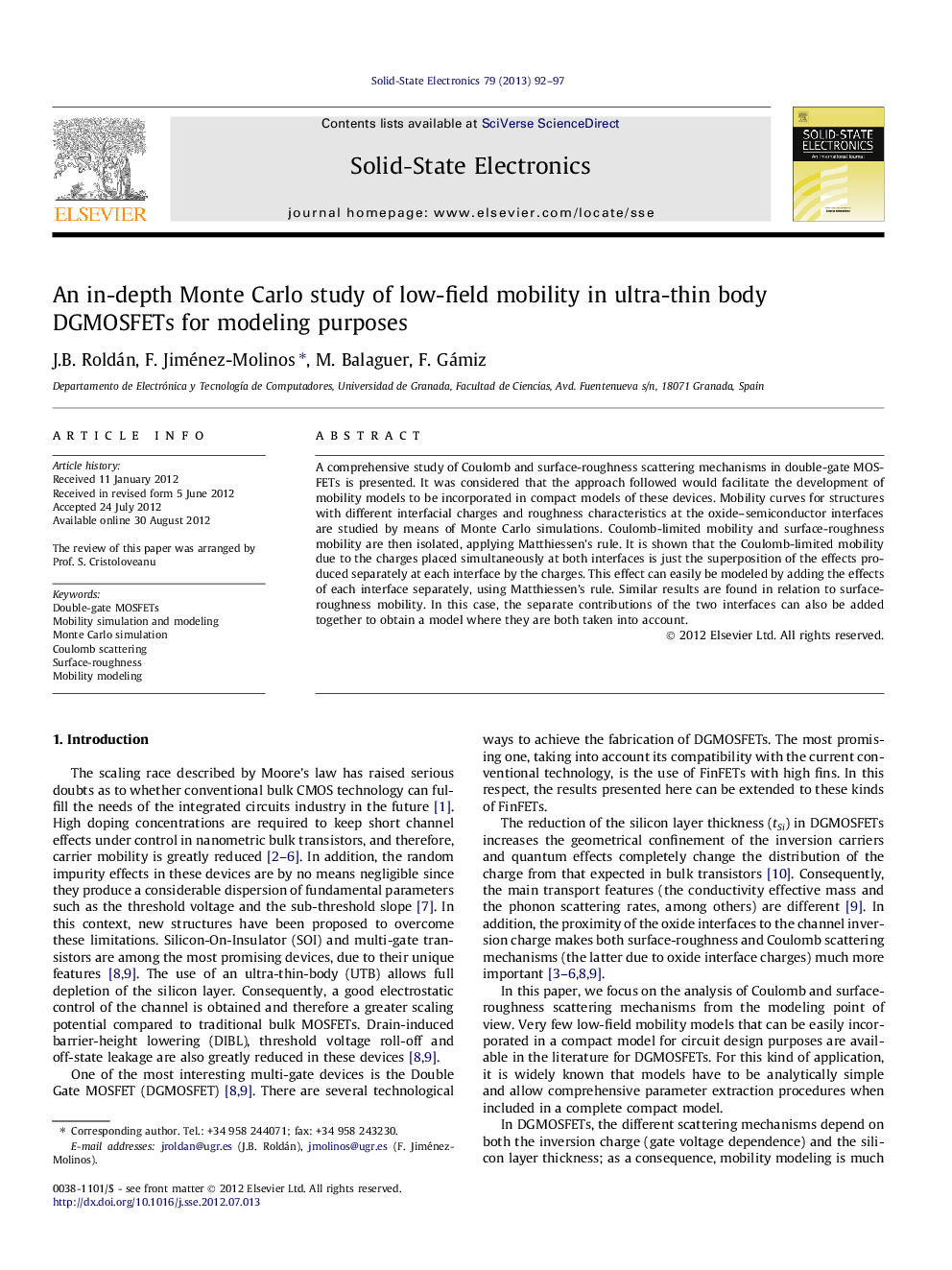| Article ID | Journal | Published Year | Pages | File Type |
|---|---|---|---|---|
| 748439 | Solid-State Electronics | 2013 | 6 Pages |
A comprehensive study of Coulomb and surface-roughness scattering mechanisms in double-gate MOSFETs is presented. It was considered that the approach followed would facilitate the development of mobility models to be incorporated in compact models of these devices. Mobility curves for structures with different interfacial charges and roughness characteristics at the oxide–semiconductor interfaces are studied by means of Monte Carlo simulations. Coulomb-limited mobility and surface-roughness mobility are then isolated, applying Matthiessen’s rule. It is shown that the Coulomb-limited mobility due to the charges placed simultaneously at both interfaces is just the superposition of the effects produced separately at each interface by the charges. This effect can easily be modeled by adding the effects of each interface separately, using Matthiessen’s rule. Similar results are found in relation to surface-roughness mobility. In this case, the separate contributions of the two interfaces can also be added together to obtain a model where they are both taken into account.
► A MC simulator is used to analyze DGMOSFETs mobility for several geometrical configurations. ► A modeling approach was used to study the Coulomb and surface-roughness mobility components. ► The basic dependencies of the main scattering mechanisms are obtained and characterized. ► The results are used to analyze the technological solutions available currently for DGMOSFET fabrication.
